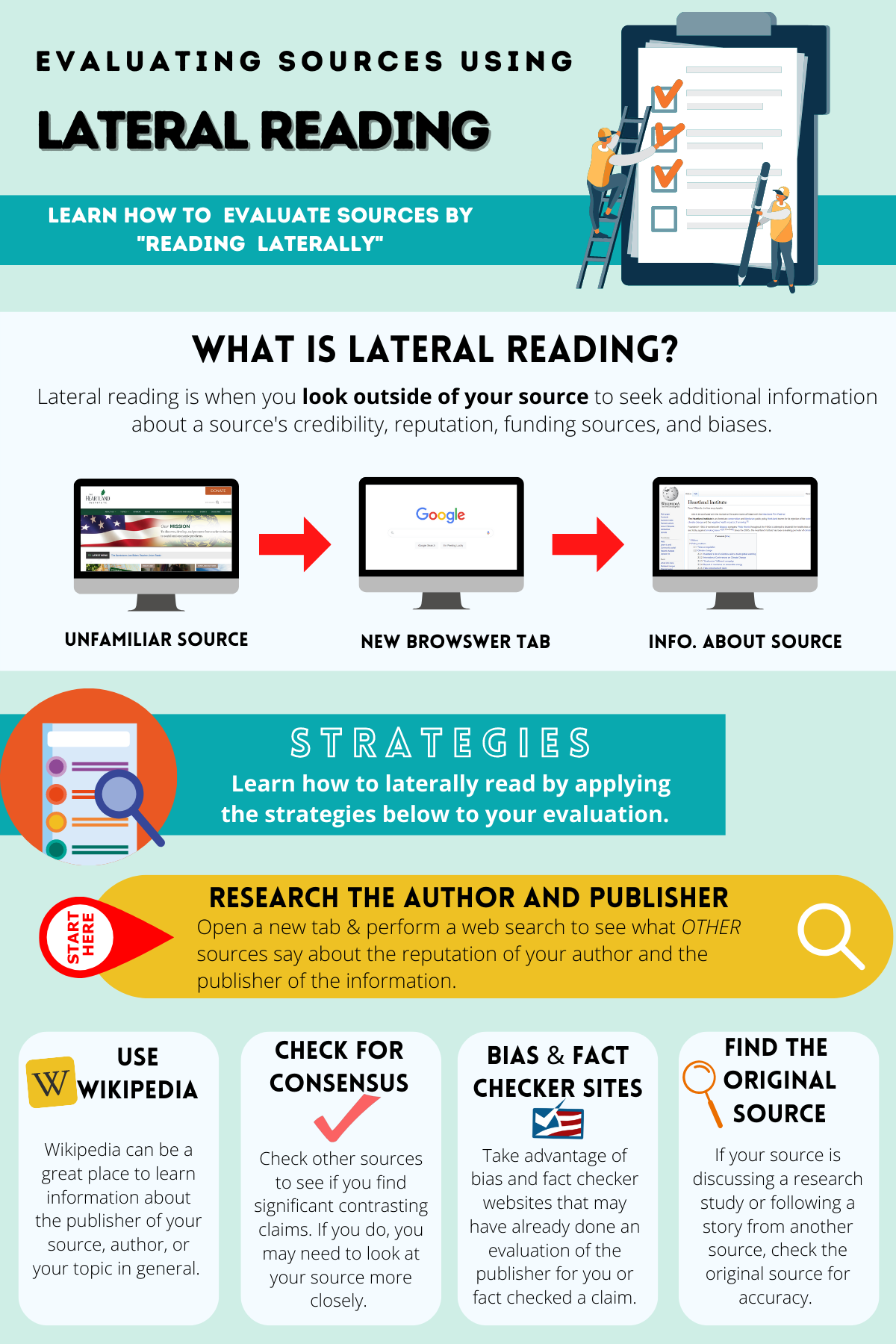11 Verifying Sources
Taking extra time to verify your sources can help better ensure the integrity of your research. Verification is more than simply checking to ensure that a source exists, however, but is also a method for determining the quality of the source.
There are several methods for verifying sources. We’ll examine one: Lateral Reading. If you prefer catchy, relevant acronyms, check out Michael Caulfield’s SIFT and Ellen Carey’s P.R.O.V.E.N. method. These methods approach verification uniquely but draw from lateral reading as a starting point.
Lateral Reading
As you’re reading this resource, you’ll come across various links and citations. Did you click on any of them? One easy method for verifying a source is to browse the source for clues about the author’s background and any affiliated organizations. What else has the author published? What is the purpose of any organizations that they are affiliated with? These questions can help you determine the credibility of the author(s).
How do you know this resource, Professional Writing and Communications for Business, is of quality? Why should you trust me—the author—as someone who has any expertise when it comes to talking about writing?
The easiest way would be to look me up and verify my credentials. When you Google my name, you’ll find links to an outdated personal site, my LinkedIn profile and other social media accounts, a few events, and writing I’ve done. From my LinkedIn profile, you can tell I’ve taught writing since 2013, and before that, I worked as a “public relations specialist” and designer. From this information alone, I hope you are convinced I have enough experience teaching writing and writing professionally. You might also check my affiliations: can you assume that my employer, the University of Wisconsin-Green Bay, has checked and verified my experience and credentials?
Lateral reading is a technique for evaluating a source’s credibility by comparing it to other sources. It involves reading “around” a resource to evaluate bias, inaccuracy, and hidden assumptions.
The UWGB Library offers a resource guide and infographic (shared below) that can help guide you through the process.


